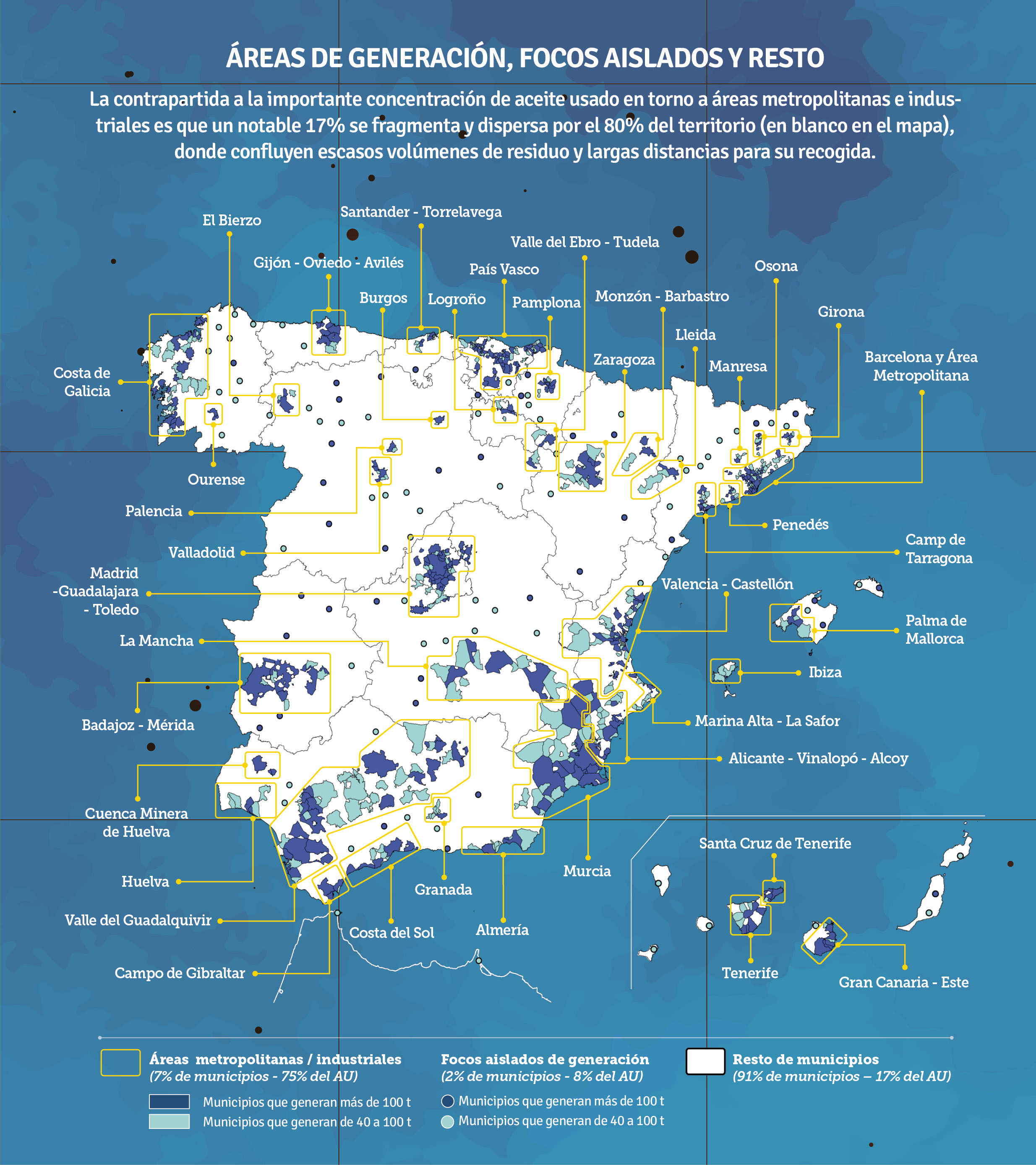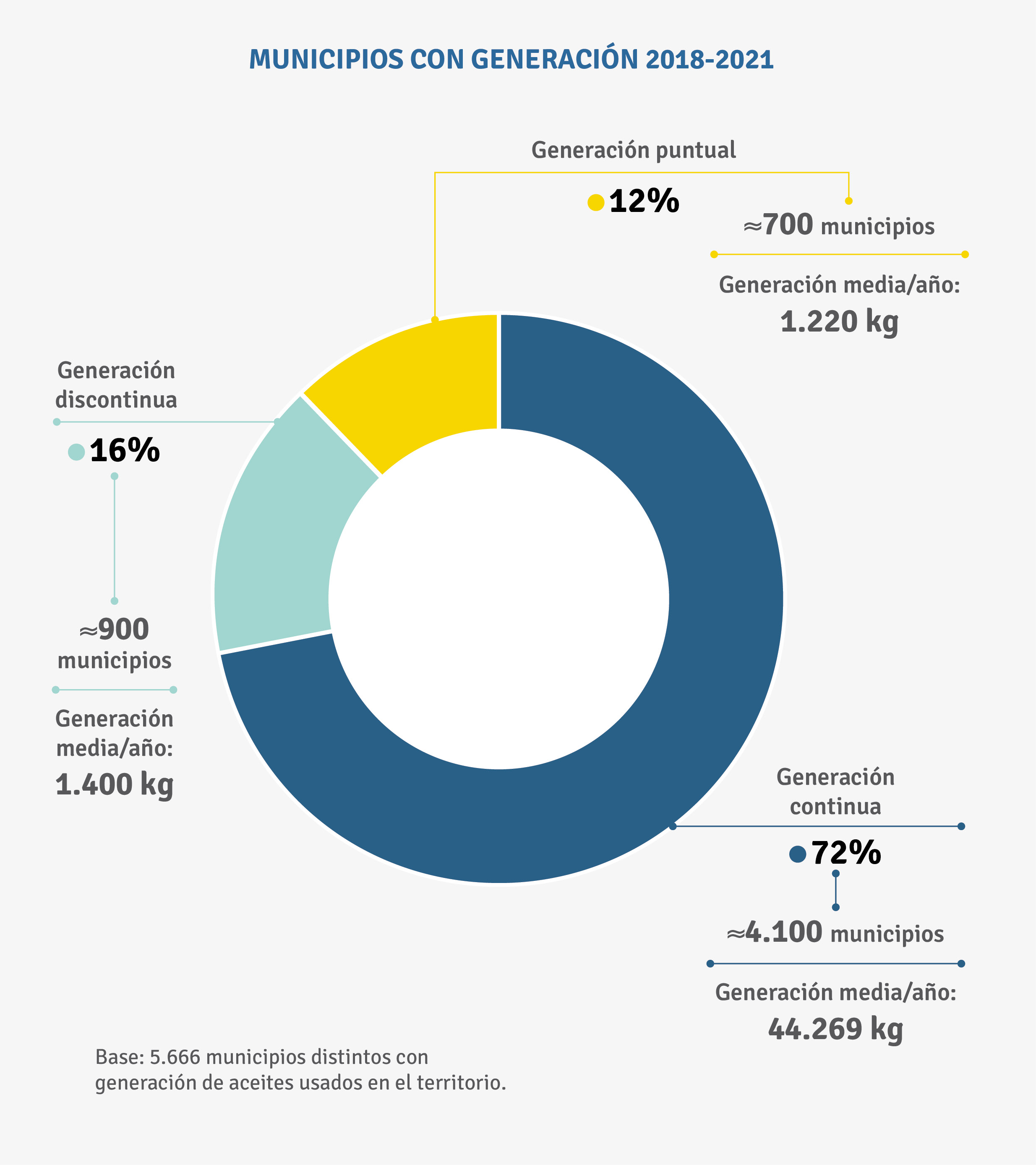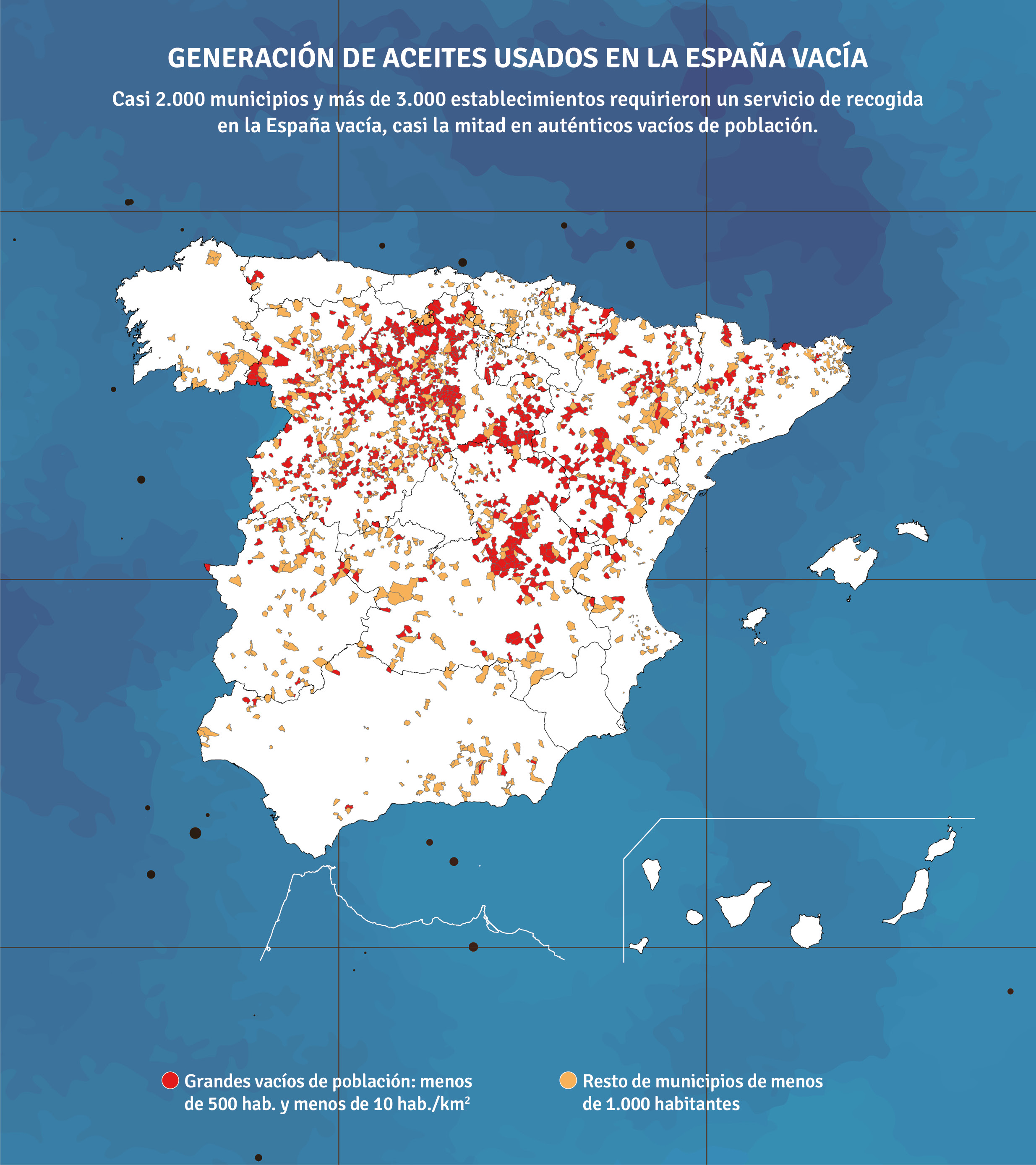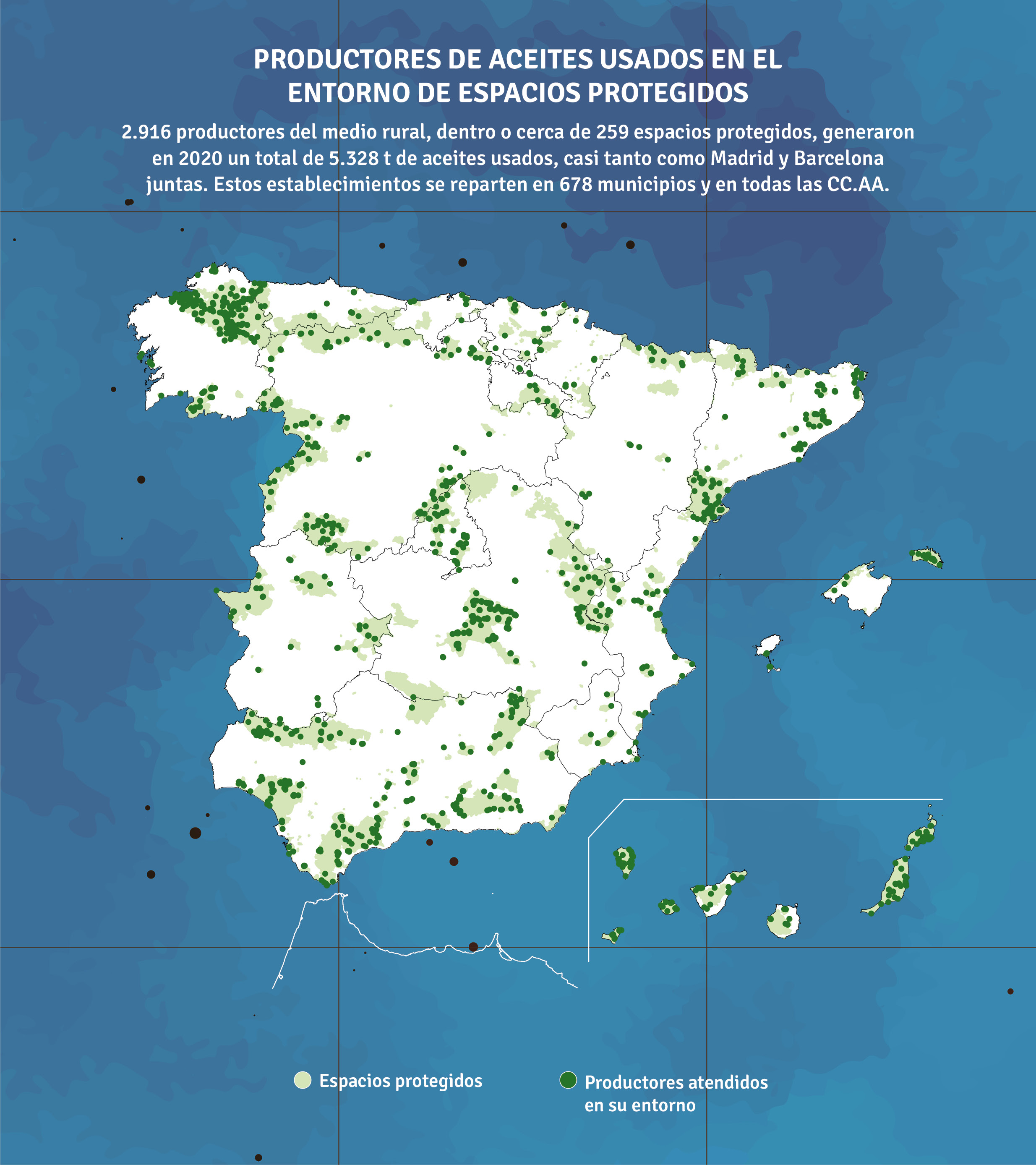49. Cabecera noticia informe AUE 2020
Depopulated Spain generates as much used industrial oil as the cities of Madrid and Barcelona combined
The integrated management system for used industrial oils (SIGAUS) has published its Report on Used Oil in Spain 2020-2021, a comprehensive analysis of the particularities of the generation of this hazardous waste nationwide. It reveals the extent to which the fragmented generation of used oil makes it hugely difficult to collect: up to 70,000 points in 4,800 different municipalities generate this waste, 85% of them small and dispersed. The document highlights how used oil is generated in rural areas –or depopulated Spain– or next to important natural resources, where many thousands of facilities received a service with huge environmental value.
10-12-2021

24. Parrafo noticia Informe AUE 2020 (1)
SIGAUS, the organisation in charge of collecting and treating used oil from vehicles and machinery, has drawn up an exhaustive account of the generation of used oil nationwide. The report “Used industrial oil in Spain 2020-2021” analyses the dispersion of one of the most widely generated hazardous wastes in Spain. This dispersion is due to territorial and demographic factors and requires complex collection logistics, bringing the need for external funding in order to guarantee complete control and correct management of used oil.
With the help of some twenty maps and graphs, the report links used oil production to the irregular territorial distribution of the population and economic activity in Spain, characterised by the concentration-dispersion duality. The document highlights generation in rural areas in the mountains, or in the so-called depopulated Spain, and devotes a specific chapter to collection in areas with a unique environmental risk, such as rural areas close to protected areas or water resources, where collection is particularly important, yet very costly.
Parrafo noticia informe AUE 2020 (2)
Main results
• Concentration-dispersion in the territory: 4,816 municipalities generate used oils in a single calendar year. 75% of all the waste generated is grouped together in 40 high-concentration areas (580 municipalities). However, over 4,000 municipalities need to be reached in order to collect the more dispersed 17% of used oil.
• Producing sectors: Every year there are almost 70,000 facilities producing used oil. 55% are workshops and 30% industry, with very different average generations: 1,753 kg vs. 5,011 kg/year, respectively. • Generation by type of facility: Almost 80% of all producers generate less than 2,000 kg per year, and more than 20,000 points do not even reach 3 drums. The percentage of small producers is even higher in those areas that are further away from the large population centres and economic activity.
• Depopulated areas: In Spain, there are 5,000 municipalities with fewer than 1,000 inhabitants. Almost 2,000 of them generate used oils, including 853 locations in extensively depopulated areas with fewer than 500 inhabitants and fewer than 10 inhabitants per km2. In total, these municipalities produce more used oil (6,586 t) than the cities of Madrid and Barcelona combined (5,762 t), but in a way that is a thousand times more dispersed.
• Environmental protection in high-risk areas: SIGAUS collected 5,328 t (a volume similar to that generated in the whole of the Canary Islands) in rural areas, together with 259 protected areas in all the Spanish Regions (nature parks, biosphere reserves, etc.). The quantities to be collected at these points are small (30% less than average), and the distances that need to be covered are significant (20% above average).
• Yearly evolution: Generation was 16% higher from January to June 2021 than in the first half of 2020. Slightly more than half of the used oil for the whole year is usually collected between January and June, attending to three quarters of the producers and covering almost 90% of the territory, with the second half of the year focusing on the rest and adding more capillarity in the search for more atomised, dispersed generation.
• Capillarity of the collection system: The collection system identified more than 100,000 facilities where used oil was generated between 2018 and 2021, with the service being offered at 28,000 points with minimal (less than 1500 kg) and one-off generation.
32. Parrafo cita Informe AUE 2020
“
The report links the production of used oil to the irregular territorial distribution of the population and economic activity in our country, characterised by the duality of concentration-dispersion.
„
Used Oil Observatory
Apart from this report, SIGAUS also counts on its Used Oil Observatory. This is an online tool to query data around a range of statistical variables on management of used oil in Spain, based on an interactive map and a graphic support panel. The Observatory has a public version with data aggregated by province and region, and an extended version that is available to relevant Public Administrations with data broken down at municipal level.
As Eduardo de Lecea, General Director of SIGAUS, points out, “Used oil is produced in every corner of the territory and economy. This report deals not only with the amount of information we collect and process through our technology systems, but also with the importance of collection services also reaching rural Spain. Because we provide a service to thousands and thousands of economic activities that need us, preventing this polluting waste from ending up in the environment. Precisely where it is most difficult to collect, because the quantities are small and the cost is high, is where it is most important to do so.”



